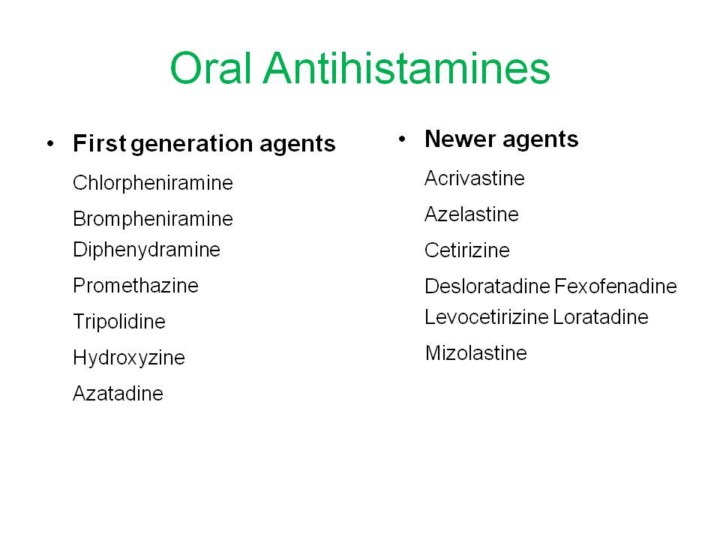| front |1 |2 |3 |4 |5 |6 |7 |8 |9 |10 |11 |12 |13 |14 |15 |16 |17 |18 |19 |20 |21 |22 |23 |24 |25 |26 |27 |28 |29 |30 |31 |32 |33 |34 |35 |36 |37 |38 |39 |40 |41 |42 |43 |44 |45 |review |
 |
First generation agents — First generation antihistamines include diphenhydramine, chlorpheniramine, hydroxyzine, brompheniramine, and others. These are available over-the-counter, both as single agents and in combination with other drugs. They are similarly efficacious compared to each other, with minor differences Adverse effects and safety — First generation antihistamines cause significant sedation because they are lipophilic and easily cross the blood brain barrier Central nervous system symptoms are reported by 20 percent or more of patients, and adverse effects on intellectual and motor function are well-documented, even in the absence of subjective awareness of sedation Second and third generation antihistamines — The second generation antihistamines include loratadine, cetirizine, azelastine, and olopatadine. These lipophobic agents were developed primarily to avoid the unwanted central nervous system effects of the first generation drugs Onset of action is within one hour for most agents, and peak serum levels are attained in two to three hours . They are also longer-acting, and are dosed once or twice daily. Like older H1 antihistamines, they have less impact on nasal congestion compared to intranasal glucocorticoids (INGCs). The oral second generation agents appear to be similarly efficacious to each other .
|